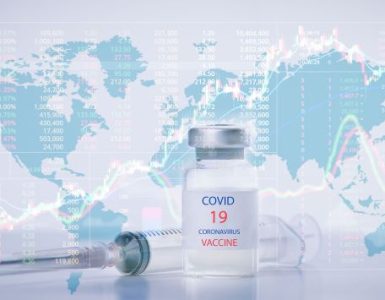 After 16 years of détente, scientists are once again ready to go to war with the AIDS virus.
After 16 years of détente, scientists are once again ready to go to war with the AIDS virus.
Unsatisfied with transforming AIDS from a death sentence into a chronic condition, researchers who once thought cure was impossible are once again ready to try. At a meeting today in Washington, D.C., just days before 25,000 people will attend the international AIDS 2012 conference, leading HIV researchers unveiled a “road map” to the cure.
“The burden of treating millions of people for 40, 50, 60 years is unbearable, untenable,” says David Margolis, a professor at the University of North Carolina-Chapel Hill and a member of the International AIDS Society, which on Thursday released its strategy for a cure. “The cure agenda needs to be put forward in a serious way.”
The early years of the AIDS epidemic were, of course, a bloodbath, with all of the casualties on one side. A diagnosis was universally fatal. The development of drug cocktails in the mid-1990s, however, brought the fight against AIDS to a sort of stalemate, allowing patients to live with the virus for years, Margolis says. Doctors also improved on the drugs patients took. Instead of taking a complicated, carefully timed schedule of 40 pills, many patients were given the option to take just one pill a day.
Improvements in anti-AIDS therapy also have reduced the drugs’ side effects. Still, patients now have to deal with long-term complications, such as heart problems, bone disorders and memory problems, according to the strategy statement, published in Nature Reviews Immunology.
But the cost of treating the world’s 34 million HIV-positive patients is staggering, at an estimated $24 billion a year in 2015, the AIDS Society says. And for every person starting treatment, another two are newly infected.
The world scientific community has been inspired by what, in some ways, could seem like a fluke: the case of the only person ever truly cured of HIV, says Diane Havlir, a professor at the University of California-San Francisco and the U.S. co-chair for AIDS 2012.
Timothy Brown, known as the “Berlin patient,” is a unique case in every way. The 40-year-old American was cured of HIV after undergoing a bone-marrow transplant in Germany for leukemia in 2007. The transplant came from a donor with a genetic mutation that provided resistance to HIV.
No one would ever suggest performing routine bone-marrow transplants on HIV patients, however, given their dangerous and harrowing side effects, says Steven Deeks, co-chair of the AIDS society’s cure working group and a professor of medicine in residence also at the University of California-San Francisco.
Still, scientists have been inspired just to know that a cure is possible, because it gives them hope that others could be cured as well using other techniques, Havlir says. “The fact that one person has been cured is a total game-changer,” Havlir says. “It’s pivotal. There is general agreement that we should set our targets high.”
Scientists are working on many approaches to fight AIDS, including vaccines to prevention infection. Unlike a vaccine, which would aim to provide long-lasting immunity, an AIDS cure would not protect someone for life. So, in theory, a person could get infected again, Margolis says.
Possible cures could involve improving treatments to prevent the virus from making copies of itself, gene therapy, and treatment vaccines to boost the immune system, the strategy statement says.
Margolis also is working on one of the most exciting strategies, which Deeks describes as “shock and kill.”
The AIDS virus, after infecting its hosts, can hide in immune cells for many years. Drugs can keep the virus in check but not kill it, because they can’t get to it, Margolis says.
His work involves using a drug, already licensed to treat a rare cancer that “flushes” the virus out of cells. On one hand, that could be dangerous, because the virus is now out and about. That’s why doctors would do this only for patients already taking drug cocktails to keep their HIV under control. But once the virus has been “unmasked,” doctors could use drugs to kill it, Margolis says.
Another strategy could be to identify and kill the immune cells in which the AIDS virus is hiding, Deeks says. Doctors would have to be careful not to kill too many healthy immune cells at the same time, a key challenge scientists’ face in treating cancer.
This sort of active warfare could make HIV treatment feel more like chemotherapy, which often makes cancer patients acutely sick, Deeks says.
The benefit, Deeks says, would be that people could have “years of prolonged life without continued therapy.”
Source: USA Today

















